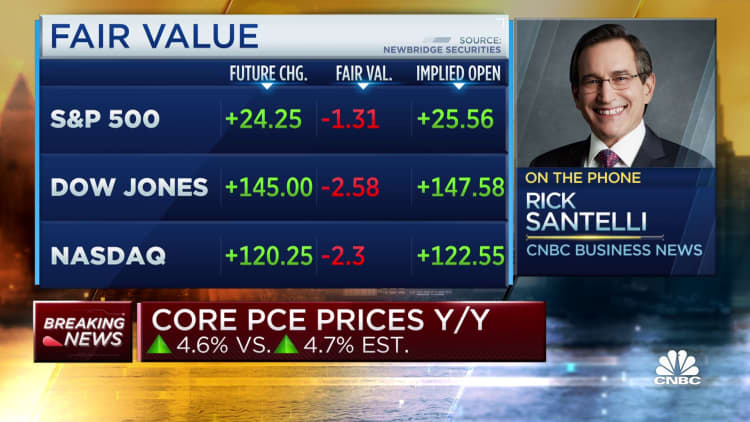
Inflation pressures eased slightly in May as consumer spending slowed considerably, according to a Commerce Department report released on Friday.
The personal consumption expenditures price index, a closely watched number by the Federal Reserve, increased 0.3% for the month when excluding food and energy. This figure aligns with the Dow Jones estimate. The core PCE increased 4.6% from a year ago, slightly lower than expected.
In April, the index rose 0.4% for the month and 4.7% from a year ago.
When considering the volatile food and energy components, inflation was significantly softer, with just a 0.1% increase for the month and a 3.8% increase from a year ago. These numbers are lower than the 0.4% and 4.3% increases reported for April. The year-over-year headline number was the lowest since April 2021, while the core was the lowest since October 2021.
While inflation slightly decreased, spending only rose by 0.1% for the month, falling below the estimated 0.2% and experiencing a significant drop from the 0.6% increase in April. This deceleration occurred despite personal income accelerating by 0.4%, surpassing the estimated 0.3% increase.
“The spending splurge is likely nearing the end as consumers have already satisfied most of their pent-up demand,” commented Jeffrey Roach, chief economist at LPL Financial.
Although the data released on Friday showed inflation moving in the right direction, it remains well above the Fed’s 2% longer-term target. According to Central bank Chairman Jerome Powell, it will likely take a few more years to achieve this level.
During their meeting in June, Fed officials indicated that they expect at least two more quarter-point interest rate hikes before the end of the year. Even Atlanta Fed President Raphael Bostic, who opposes further increases, stated on Thursday that he doesn’t anticipate any cuts this year or in 2024.
Traders are currently pricing in an 87% chance of the Fed approving a quarter-point increase at the July meeting, a probability that remained unchanged after Friday’s data release according to CME Group calculations.
As prices have increased, consumers have begun to save more and reduce their spending. The personal savings rate for May rose to 4.6%, up from 4.3% in April.
In terms of spending, there has been a shift back to services, a departure from the trend during the Covid pandemic when consumers focused more on purchasing higher-priced goods.
According to the Commerce Department’s Bureau of Economic Analysis, spending on services increased by $52 billion for the month, while spending on goods decreased by $33.1 billion. This shift occurred alongside a 0.3% rise in services prices and a 0.1% decrease in goods prices.
Energy prices fell by 3.9%, while food prices increased by just 0.1%.
Denial of responsibility! VigourTimes is an automatic aggregator of Global media. In each content, the hyperlink to the primary source is specified. All trademarks belong to their rightful owners, and all materials to their authors. For any complaint, please reach us at – [email protected]. We will take necessary action within 24 hours.


